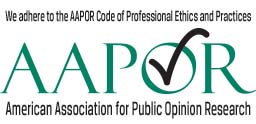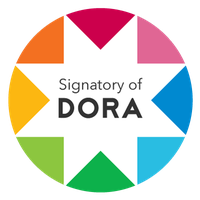Submissions
Submission Preparation Checklist
As part of the submission process, authors are required to check off their submission's compliance with all of the following items, and submissions may be returned to authors that do not adhere to these guidelines.- The submission has not been previously published, nor is it before another journal for consideration (or an explanation has been provided in Comments to the Editor).
- The submission file is in OpenOffice, Microsoft Word, or RTF document file format.
- Where available, URLs for the references have been provided.
- The text is single-spaced; uses a 12-point font; employs italics, rather than underlining (except with URL addresses); and all illustrations, figures, and tables are placed within the text at the appropriate points, rather than at the end.
- The text adheres to the stylistic and bibliographic requirements outlined in the Author Guidelines.
Author Guidelines
Author Guidelines
Submission Fee
There is no submission fee.
Article Processing Fee:
Euro150 per accepted article
Printed copy of the journals Fee:
Euro 25 per copy of the printed journal
Maximum length of an article:
15-20 pages, including graphs, annotations and references. Extra pages will be charged, seperately @ Euro 7 per page.
Submission
The articles submitted to the Journals of the Centre of Excellence for Scientific and Research Journalism should be in accordance with the aim and scope of the journal. Manuscripts must be written in good English and should be submitted through e-mail:
editor.jlw@centreofexcellence.net
Manuscripts should be submitted as a single MS-Word file including all materials.
Any opinions expressed in articles are only those of authors and not necessarily those of the editor, the associate editors or the publisher.
Scope of the Journal
The Subjects will cover all Disciplines and Branches of Law, but are not limited to: Definition, Mainstream definitions, History, Legal theory, Philosophy of Law, Positive law and nonpositive law, discussions, Economic analysis, Sociology of Law, Legal systems, Civil law, Common law and equity, Religious law, Sharia law, Legal institutions, Judiciary, Legislature, Executive Military and police, Bureaucracy, Legal profession, Civil society, Legal subjects, International law, Constitutional and administrative law, Criminal law, Contract law, Tort law, Property law, Equity and trusts.
Manuscript
Manuscript must be unpublished and according to sample article.
The title page must include an abstract that is no longer than 400 words, key words and JEL classification numbers.
Full contact information for all authors must also be provided on a separate page.
References must strictly meet the journal's style requirements.
Spelling and punctuation
Authors can use either the US or UK variety of English spelling and punctuation. The chosen variety has to be used consistently throughout the manuscript. It is unacceptable to mix different styles, spelling and punctuation.
Title Page
The first page of the manuscript must contain: the full title; the affiliation and full address of all authors and the corresponding author;
the second page must contain an abstract of 400 words or less.
Abbreviations
Any word(s) to be abbreviated should be written in full when first mentioned followed by the abbreviation in parentheses.
Illustrations
All illustrations of any kind should be submitted as sequentially numbered figures, illustrations should not be inserted in the manuscript but supplied after the main body of the text.
Tables and Supplementary Material
Data must be kept to a minimum.
Tables should be numbered and headed with short titles. As with illustrations, they should not be inserted in the manuscript but supplied after the main body of the text.
Acknowledgements
Acknowledgements should appear at the end of the text.
References
Should be complete according to following guideline:
Arrow, K. (1970) “The Organization of Economic Activity: Issues Pertinent to the Choice of Market Versus Non-market Allocations” in Public Expenditure and Policy Analysis by R.H. Havenman and J. Margolis, Eds., Markham: Chicago,pp. 67-81
Benabou, Roland (1994) “Education, Income Distribution, and Growth: The Local Connection” NBER working paper number 4798
Berglas, E. (1976) “Distribution of tastes and skills and the provision of local public goods” Journal of Public Economics Vol. 6, No.2, pp.409-423.
Edgeworth, F.Y. (1881) Mathematical Psychics, Kegan Paul: London.
Mas-Colell, A and J. Silvestre (1991) “A Note on Cost-Share Equilibrium and Owner- Consumers” Journal of Economic Theory Vol.54, No.1,pp. 204-14.
Footnotes
These should be numbered consecutively in the text.
Appendix At the end of paper.
Revision
When advised by the language editor, the Publisher has the right to send back manuscripts to their authors for correction. The Publisher may also reject manuscripts for publication if the suggested corrections are not implemented.
Author’s rights and obligations
Authors have the right to publish one or two manuscripts in one volume.
Manuscripts have to be formatted according to the Publisher’s requirements.
Manuscripts have to be minimum seven and maximum twenty(20) typeset pages long for a journal, and six (6) pages long for a Conference Presentation.
The publication of longer manuscripts is to be negotiated with the Publisher.
When the manuscript is written by more than one author, a corresponding author is appointed. The corresponding author fills in the publication registration form in his name and is responsible for all subsequent activities required by the Publisher until the publication of the manuscript.
The fact that the corresponding author has sent a completed registration form to the Publisher means that the corresponding author and his or her co-authors agree with the conditions for publication as defined by the Publisher.
Presentation of your conference paper
Before your presentation
Anticipate questions.
Go to panels the day before your session to see what types of questions people ask, and to find out what the tone of the conference is.
Anticipate criticism.
Bounce your ideas off a friend/colleague whom you know will be critical.
Preparing your paper for presentation
Rewrite your essay for the oral medium.
Your audience will not have the luxury of reading the text of your essay. Include oral cues to assist the audience.
Transitions should be clear. It is almost impossible to be too obvious in an oral presentation. Obvious oral cues like, "I have three points. Number one will cover . . .," which sound wooden in writing, are helpful when read aloud.
Use appropriate punctuation. Dashes, semi-colons, and parentheses will not be visible to the audience. If you quote text, pause and indicate the quote by saying "quote . . . . . end quote."
Don't use lengthy quotes or quote too much material.
This is confusing and unproductive. Your audience wants your ideas, not what you have gleaned from others. Don't simply apply someone else's ideas to a different text. If it is absolutely necessary to include lengthy quotes, provide the audience with a handout of quotes to which you will be referring.
Read the text aloud to yourself as you revise.
This will help you eliminate wordy sentences and awkward phrases.
Be careful of criticism of other scholars.
It is appropriate to discuss criticisms, but use a tone of respect and objectivity. Your footnotes might be sitting in the audience!
Focus
Keep the essay focused! You only have time (usually 15-20 minutes) to present one idea.
You will not be able to present everything you know about a subject.
Just choose one idea, interpretation, or reading. You do not need to provide all the background tracing how you reached this interpretation; present your point and back it up. You do not need to defend the validity of your idea. You also don't need to give a literature review. You want to make a clear, focused, and interesting argument that is backed up with a few interesting points of evidence, not give the entire content of your dissertation. Many conferences are intended for "works in progress" and expect presenters to bring up engaging questions and offer suggestions for future research, not give the final definitive word on a subject.
Consider the audience to whom you are speaking.
Who would be most likely to attend this conference? Don't summarize popular ideas--you do not want to insult the intelligence of your audience. On the other hand, don't assume that a critic familiar to you is familiar to everyone else. People interested in your subfield will likely be at your conference, but there is no guarantee they will make it to your panel. Your audience may not be up to speed on the nuances of your conversation, so instead of trying to talk directly to the scholars whose work you�ve been reading, think about how you would explain your study to someone in a different subfield of your discipline, or in a related discipline. Jargon and subfield debates can drag down the momentum of your paper and alienate audience members who are not tapped into your vein of study. Talking about your topic in a less in-group way will help audience members follow your ideas more easily. And it will also make them feel comfortable about asking questions, and more specific questions, about your research.
As you edit, remember Hemingway�s prescription to �kill your darlings.� This may mean cutting out your favorite tangents or phrasings to make your paper more direct or cohesive, but in the end it is better to have a more focused paper, than to have someone ask a question about a digressive section you left in because you liked the phrasing.
Clarity
Don't use jargon;
it is often imprecise. But if you use field-specific terms, make sure that you know what they mean and give a brief definition if it is a term that has multiple uses or interpretations in your field.
Find simple ways to discuss complex ideas. Use easily grasped metaphors and analogies.
Presentation
Meet length and time requirements. This is extremely important. If you have 20 minutes, do not, repeat, do not go to your panel with a paper exceeding 10-11 (double spaced; 12 point font) pages in length. Going over your time limit will not make you popular with the other speakers on your panel (or your audience). The general rule is two minutes per double spaced, 12 point font page, exclusive of citations. If your discipline uses footnote references, it is helpful to transfer them to endnotes to make your paper easier to follow as you read.
Follow the conventions of your field and the conference. If presenters are expected to read from a prepared text (often sent to a commentator or chair prior to the conference), stick to the text. Make sure everyone on your panel has a copy of the version you will present. It is acceptable to make changes after you submit the paper, but be sure you let the commentator or chair know about the changes to your paper. Unless you are a very accomplished extemporaneous speaker, it is extremely preferable to read from a prepared text rather than speaking from notes or an outline alone. This prevents you from leaving out important information (your thesis, for example), from wandering around, and from going over your time limit.
Bring a bibliography to reference when answering questions. Take notes of questions and suggestions that are important; you won't remember them otherwise. You also look engaged and receptive when you take notes of the audience's questions and suggestions. Don't be afraid to say you don't know the answer to a particular question. The trick is not to sound defensive, but to confidently say that area is something you really need to research, or that you'd like to take a look at those sources, etc.
Show your audience that you are interested in the essay! Use vocal inflection and be engaging. Remember to relax!!
Visual aids:
Make a note to yourself in your paper where you are going to use visual aids. Practice with your visual aids before you give your presentation.
Copyright
Only original academic manuscripts related to the journal topics and unpublished elsewhere are considered for publication in the journals.
The manuscripts must not be submitted for publication elsewhere at the time they are sent to the Publisher by their Authors.
The Authors grant the Publisher the right to publish and distribute their articles.
The Authors may require and the Publisher may allow subsequent publication of the articles in other collections.
The Authors are obliged to inform the Publisher if during the submission or editing of the manuscript they have offered or are offering it to another Publisher.
Publisher’s rights and obligations
The Publisher has the responsibility to distribute and disseminate the manuscripts published in the journals. For the purpose, we have developed and employed Internet marketing schemes and cooperation with various partners.
The Publisher has the right to give permission for the re-use and re-publication of manuscripts, if required.
The Publisher decides whether free access shall be permanent, limited or temporarily suspended. The Publisher does not have to inform authors and users in advance when limiting access temporarily.
The Publisher has the right to change the publishing requirements and the conditions for use of the journals on condition that he provides timely and appropriate information about it.
Identification
All journals have an ISSN (International Standard Serial Number).
What is ISSN?
http://en.wikipedia.org/wiki/International_Standard_Serial_Number)
Publication Process Fee for a journal article
The Centre of Excellence for Scientific & Research Journalism does not sell online published manuscripts and offer all published manuscripts free of cost to all authors and researchers.
Open access allows the research community to view and download any manuscript without a subscription, enabling far greater distribution of an author's work than the traditional subscription-based publishing model. Many authors in a variety of fields have begun to realize the benefits that open access publishing can provide in terms of increasing the impact of their work, because there is at all NO CHARGE to access its research content.The publication costs of a manuscript are paid from an author's research budget, or by their supporting institutions.As costs are involved in every stage of the publication process,like manuscript handling form submission to publication, peer-review, copy-editing, typesetting, tagging and indexing of articles, Electronic composition and production, hosting the final article on dedicated servers, electronic archiving, hard copy of the journal, server and website update and maintenance, supporting sales and marketing costs to ensure global dissemination and administrative and overheads, the author is asked to pay an article publication fee. A publication fee is US $150 is payable for manuscript ACCEPTED for publication. The amount of fee charged by the journal is lower than most of the other journals. The publication fee must be paid prior to publication. The article accepted for publication will be processed further toward publication (online and print) after the author pays the publication fee. Print Copy The one hard copy of the journal and five off print of the article will be sent by post to all corresponding authors after publication.
Additional copy
Additional copy of the journal can be purchased at the author's preferential rate of Euro25.00 per copy, and Euro5 per off print of article.
Disclaimer
The Publisher assumes no responsibility whatsoever, direct or implied, for the contents of the papers as well as for the consequences arising from misinterpretation or unawareness of the requirements for publication.The Publisher assumes no responsibility whatsoever, direct or implied, for any damages suffered by co-authors from actions or inactions of their corresponding author.The manuscripts along with the copyright form should be addressed to:Editor JSS,
The Centre of Excellence for Scientific and Research Journalism, COES&RJ LLC.
E-mail: editor.jss@centreofexcellence.net
Privacy Statement
The names and email addresses entered in this journal site will be used exclusively for the stated purposes of this journal and will not be made available for any other purpose or to any other party.







 a Creative Commons Attribution 4.0 International License.
a Creative Commons Attribution 4.0 International License.
